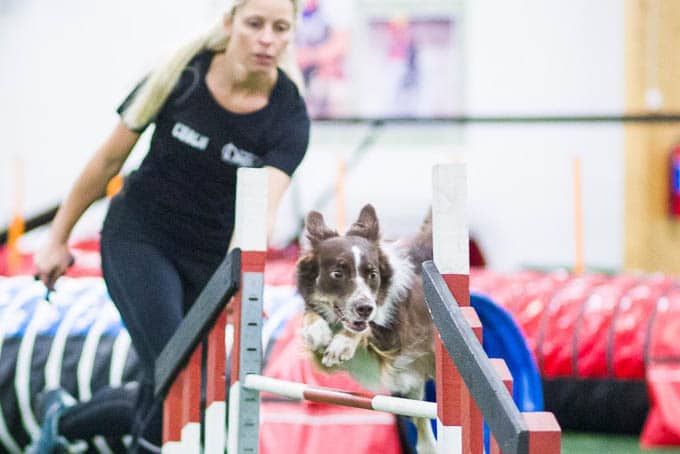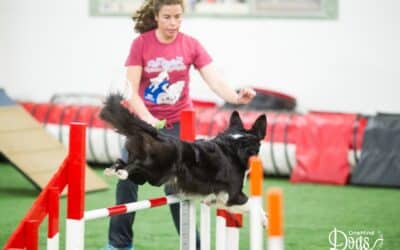There are over 30 OneMind Dogs handling techniques that will allow you to create a diverse agility toolbox. Depending on your style, you may use some of the same tools very often, and other tools only get pulled out occasionally. Having a diverse toolbox with many options means that you can handle any course, no matter what restrictions you might be working with.
In the video below, Tina Hindsgaul had an injured leg which prevented her from running this course alongside her dog. She needed to figure out a way to handle this course with very little movement and only at a walking pace. Tina has spent the time developing her toolbox so that her and her dog have many skills such as distance work on jumps, tunnels and contacts as well as a variety of verbal cues and handling techniques that can be executed and understood by her dog at a distance.
When the handler cannot run, more time needs to be spent training obstacle focus and performaning skills at a distance so that the handler can send the dog and trust that the dog will stay committed and finish the correct performance at a distance. When the handler has certain restrictions, trained verbal cues used in conjunction with supporting handling elements can go a long way towards handling the dog at a distance.
There are also many other ways to handle this exact same course. OneMind Dogs Coach Channie Orsted demonstrates several ways to handle the same sequences with different handling techniques.
When you spend the time developing your agility toolbox, you will have multiple tools for every situation! This means you can always find a handling solution that fits you and your dog best for every course… a full toolbox gives you options to choose from.



